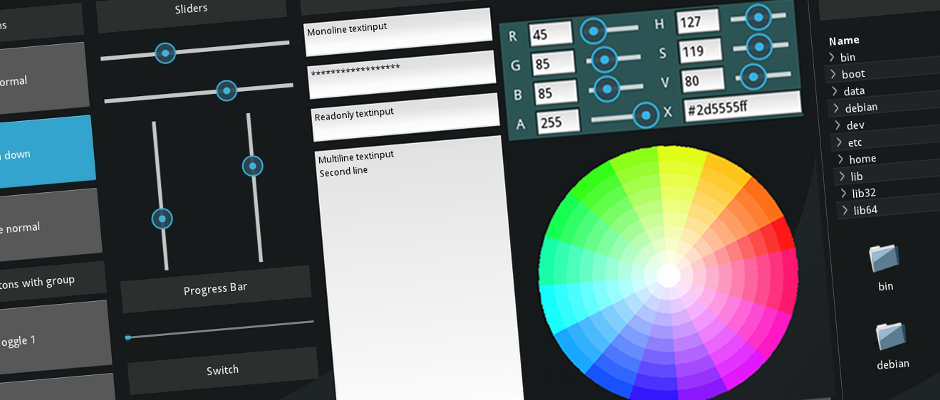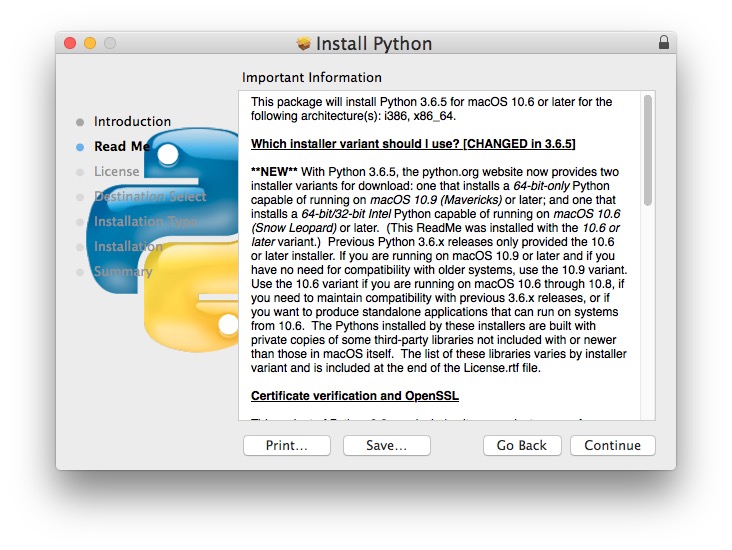Python is a widely-used general-purpose, high-level programming language. This article will serve as a complete tutorial on How to download and install Python latest version on macOS / Mac OS X. Like Linux, macOS also comes with Python pre-installed on the system. It might be Python version 2 or some similar outdated version. To update to the latest version, we will use the Homebrew Package manager. It is one of the best and convenient methods to install Python on macOS.
To know more about Homebrew Package manager, visit here.
I want to install pip for python 2.7 on my Mac. I think this is the python located in /usr/bin/python. Unfortunately I have already installed Anaconda, which installs python 3.6.3, and changes things so that the command python xxx.py automatically runs xxx.py using python 3.6.3. Version Operating System Description MD5 Sum File Size GPG; Gzipped source tarball: Source release: 8edf1c9bcbe1: 17539408: SIG: XZ compressed. Download Python for Mac - A free, open source and high-level programming language that can be used for web, Internet and software development, desktop GUIs, science, education and more.
Download and install Homebrew Package Manager
If you don't have homebrew installed on your system, follow the steps below
Open the Terminal Application of macOS from Application -> Utilities. Bash terminal will open where you can enter commands
Enter following command in macOS terminalEnter system password if prompted. This will install the Homebrew package Manager on your OS.
After you see a message called 'Installation Successful'. You are ready to install python version 3 on your macOS.Install Python Latest Version on macOS / macOS X
To install python simple open Terminal app from Application -> Utilities
and enter following commandAfter command processing is complete, Python's version 3 would be installed on your mac.
To verify the installation enter following commands in your Terminal app
Bingo.!! Python is installed on your computer. You can explore more about python here
Attention geek! Strengthen your foundations with the Python Programming Foundation Course and learn the basics.
To begin with, your interview preparations Enhance your Data Structures concepts with the Python DS Course.
Recommended Posts:
If you like GeeksforGeeks and would like to contribute, you can also write an article using contribute.geeksforgeeks.org or mail your article to contribute@geeksforgeeks.org. See your article appearing on the GeeksforGeeks main page and help other Geeks.
Please Improve this article if you find anything incorrect by clicking on the 'Improve Article' button below.
Python is one of the most powerful, and beginner-friendly programming languages in the world. It can come as a surprise then, to discover just how complicated it can be to learn how to install python on Linux, Windows, or Mac! With multiple different versions, an interpreter, and multiple different editors and IDEs options to choose from… this can be a bit of a headache!
Also read: Best online Python courses Openconnect download windows 10.
Read on then, and we'll go through how to install Python step-by-step, so that you start coding.
What you will need
When you learn how to install Python, you will need to install two main elements:
- A python interpreter
- A python IDE
The interpreter is the program that runs in the background and that allows your computer to understand Python. Think of it a little bit like a language pack!
The IDE is the 'integrated development environment.' This provides you with a handy space to create your Python code that will show you any errors you might be about to make, let you run your files, and generally give you everything you need in one place.
You can grab the interpreter here:
- Windows: https://www.python.org/downloads/windows/
- Mac: https://www.python.org/downloads/mac-osx/
- Linux:https://www.python.org/downloads/source/
The good news is that you probably already have a python interpreter installed if you are on either Mac or Linux!
The other good news, is that you don't actually need to install an IDE to get started! Instead, you can use the Python shell to start coding. Just launch that program, then go to 'New File' and you can start writing code!

The bad news is that you will need to choose between two versions of Python: Python 2 and Python 3. Each of these has its own strengths and weaknesses, but Python 2 is no longer officially supported, so we recommend choosing Python 3.
Read our introduction to Python for more on these differences:
And, simply, that is how to install Python! But if you want a better experience, then you should probably find a good IDE that will streamline the coding process for you.
How to install Python IDEs
When you learn Android development, you will almost always use Android Studio as your go-to IDE. This is the official solution provided by Google, and as such, it comes with all the tools you might want for building Android apps specifically. Python is a much more flexible and varied programming language though, meaning that it can be used to build all kinds of different projects. To that end, there is no single 'best' IDE, and it rather comes down to a matter of choice.
My recommendation is actually to try building Python apps using Visual Studio. Visual Studio is an IDE from Microsoft that is very powerful and flexible.
When installing Visual Studio, you'll be given the option to include or ignore different components. However, you'll also be able to head back into the Visual Studio Installer at any point subsequently in order to grab the additional pieces you want.
Of course, we're going to be adding the Python development components, which you can get all together by clicking Python development under 'Workloads.'
Also read: How to call a function in Python
Once this is done, you'll have the option to start a new Python project in Visual Studio. This is a powerful and flexible IDE and a great for those that want to know how to install Python. It is also available on both Windows and Mac.
How to install Python on Linux
So how to install Python on Linux with Visual Studio? One option is to use Visual Studio Code. This is a free code editor that runs on Linux and that has many of the same features – including support for Python. As mentioned, most Linux machines will come with Python built in, but if yours doesn't, you'll need to grab the interpreter. From there, you can go ahead and set up Visual Studio Code for Python.
Python For Mac
Alternative IDEs and editors


If you're not keen on using Visual Studio, there are plenty of alternative IDEs and editors you can use once you know how to install Python. The only problem is that only a few of these are free, and many don't come with the same broad base of support that Visual Studio does.

The following are all free, however:

The bad news is that you will need to choose between two versions of Python: Python 2 and Python 3. Each of these has its own strengths and weaknesses, but Python 2 is no longer officially supported, so we recommend choosing Python 3.
Read our introduction to Python for more on these differences:
And, simply, that is how to install Python! But if you want a better experience, then you should probably find a good IDE that will streamline the coding process for you.
How to install Python IDEs
When you learn Android development, you will almost always use Android Studio as your go-to IDE. This is the official solution provided by Google, and as such, it comes with all the tools you might want for building Android apps specifically. Python is a much more flexible and varied programming language though, meaning that it can be used to build all kinds of different projects. To that end, there is no single 'best' IDE, and it rather comes down to a matter of choice.
My recommendation is actually to try building Python apps using Visual Studio. Visual Studio is an IDE from Microsoft that is very powerful and flexible.
When installing Visual Studio, you'll be given the option to include or ignore different components. However, you'll also be able to head back into the Visual Studio Installer at any point subsequently in order to grab the additional pieces you want.
Of course, we're going to be adding the Python development components, which you can get all together by clicking Python development under 'Workloads.'
Also read: How to call a function in Python
Once this is done, you'll have the option to start a new Python project in Visual Studio. This is a powerful and flexible IDE and a great for those that want to know how to install Python. It is also available on both Windows and Mac.
How to install Python on Linux
So how to install Python on Linux with Visual Studio? One option is to use Visual Studio Code. This is a free code editor that runs on Linux and that has many of the same features – including support for Python. As mentioned, most Linux machines will come with Python built in, but if yours doesn't, you'll need to grab the interpreter. From there, you can go ahead and set up Visual Studio Code for Python.
Python For Mac
Alternative IDEs and editors
If you're not keen on using Visual Studio, there are plenty of alternative IDEs and editors you can use once you know how to install Python. The only problem is that only a few of these are free, and many don't come with the same broad base of support that Visual Studio does.
The following are all free, however:
PyCharm is free to use, widely supported, and available on Windows, Mac, and Linux – so it is definitely one of the best options. For those happy to part with some cash, Sublime Text is a very clean and powerful IDE.
Finally, you can also grab Python on Android and iOS. The good news is that these require only a single download and you can then run and test your code right in the app!
iOS: Python3IDE
Download Python Mac
Android: QPython 3L
So, that is how to install Python! There are lots of options available for editors, and ultimately this will come down to your personal preference.Now you're ready to start learning to code, why not check out our guide to the best online Python courses? We also highly recommend Coding with Python: Training for Aspiring Developers, which you can nab for just $49.99, which is an absolute steal as the course is valued around $700.
